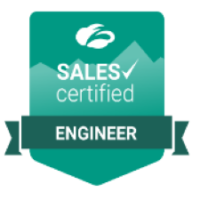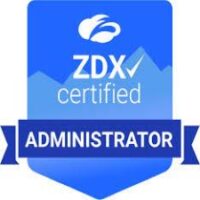As a child, everyone is taught to “work on your posture.” Why is that? Having great posture can improve your health, mood, and confidence. The same applies to clouds and workloads. Focusing on proper posture will ensure your cloud data stays healthy and secure, and that you’ll have confidence to take on any risk that may be thrown at it.
In the world of technology, poor cloud posture can be a silent killer. While organizations commonly focus on fortifying the front door, it’s often an innocuous misconfiguration that allows adversaries to sneak right in. In fact, 80% of cloud breaches are due to misconfigurations. Part of the challenge is that many teams setting up cloud infrastructure or cloud services prioritize connectivity and functionality, taking focus away from security.
Before we take a deep dive on Zscaler’s new innovations around posture, let’s set the stage a bit. The two main industry approaches to posture management currently focus on SaaS and IaaS. SaaS security posture management (SSPM) ensures misconfigurations in business platforms like Microsoft 365, Salesforce, and Google aren’t putting your data at risk from a breach. Its counterpart on the IaaS side, called data security posture management (DSPM), does the same for AWS, Azure, and Google, and provides data discovery and classification. In short, these services help you understand where all your sensitive data is located and which misconfigurations may be exposing it.
So with that, let’s explore 6 principles of cloud data protection you should think through.
1. Start with data visibilityYou can’t secure what you can’t see. This is always the first step to better data hygiene, and for cloud security the same holds true. In today’s environment SaaS and public clouds are increasingly becoming business critical, and hold troves of sensitive data. Mapping and understanding where your sensitive data is across these environments is the first step in great data security.
This is traditionally where DLP comes in, and more recently AI-based discovery. With both techniques, data can be scanned and classified as sensitive, revealing where which data is most important to secure. Look for approaches that deliver strong AI-powered discovery techniques, which delivers quick, instant visibility, without the requirements of DLP scanning.
2. Master misconfigurationsThe next issue to address in cloud deployments is dangerous misconfigurations that expose data to the public. Many of the IT teams that set up these environments are not security experts, so it’s quite common for gaps in configurations to be missed. With 80% of cloud breaches caused by misconfigurations, it’s no wonder that SSPM and DSPM platforms have become so popular. Built to scan clouds and prioritize identified misconfiguration risks, these new approaches are key to ensuring your adherence to security best practices.
3. Embrace a central DLPIn order to deliver the best approach to posture, it’s important to ensure SSPM and DSPM doesn’t operate in a silo. Both these approaches should be unified around a centralized DLP engine. A central DLP ensures that sensitive data is consistently classified, alerted and blocked across all other channels it may traverse. Remember, data doesn’t stand still. It leaves SaaS and Public Cloud and can journey to the web, email, and endpoints, which all need data protection policies as well. A good data protection strategy will ensure data, no matter where it lives or travels, can be consistently detected and blocked accurately around one unified policy and DLP engine.
4. Secure and unify SaaS securityAnnounced in our Data Protection Innovation Launch, Zscaler has reimagined SSPM and what it means to secure SaaS platforms. While SSPM is important, there are other SaaS security approaches that also are needed, including cloud access security broker (CASB), supply chain security, and behavior analytics. These tools work together to protect sensitive data from evolving security threats by providing a unified, comprehensive security posture. By securing and unifying your SaaS environments, you reduce the risk of data breaches and ensure that your organization is well-protected against all angles of attack.
5. Protect public cloud dataPublic cloud environments, while flexible and scalable, come with their own unique set of challenges. Protecting data in the public cloud requires a keen understanding of the shared responsibility model and the implementation of stringent security measures that go beyond what the cloud service provider offers. DSPM tools play a critical role here by providing ongoing risk assessments, data classification, and automated remediation to protect against security issues specific to public cloud infrastructures.
6. Strategize with a unified data protection platformDon’t stop there—think about the rest of your data protection strategy. It needs to be extended in order to remain secure. Continue your journey with a unified platform that integrates SSPM, DSPM, with other important protection channels like web, email, endpoint, and BYOD. This holistic approach not only simplifies management but also enhances your organization’s ability to protect sensitive data wherever it travels, respond to security threats, and maintain a strong security posture across all environments.
In conclusion, maintaining a strong cloud and data security posture is about actively protecting sensitive data and preemptively addressing security threats before they become security issues. By adhering to these six principles, your organization can significantly reduce the risk of data exposure and fortify its defenses against the ever-evolving landscape of cyberthreats.
Learn how Zscaler Data Protection, our comprehensive, cloud-delivered platform, helps your organization adhere to these principles so you can safeguard all your sensitive data in the cloud.
[#item_full_content] [[{“value”:”As a child, everyone is taught to “work on your posture.” Why is that? Having great posture can improve your health, mood, and confidence. The same applies to clouds and workloads. Focusing on proper posture will ensure your cloud data stays healthy and secure, and that you’ll have confidence to take on any risk that may be thrown at it.
In the world of technology, poor cloud posture can be a silent killer. While organizations commonly focus on fortifying the front door, it’s often an innocuous misconfiguration that allows adversaries to sneak right in. In fact, 80% of cloud breaches are due to misconfigurations. Part of the challenge is that many teams setting up cloud infrastructure or cloud services prioritize connectivity and functionality, taking focus away from security.
Before we take a deep dive on Zscaler’s new innovations around posture, let’s set the stage a bit. The two main industry approaches to posture management currently focus on SaaS and IaaS. SaaS security posture management (SSPM) ensures misconfigurations in business platforms like Microsoft 365, Salesforce, and Google aren’t putting your data at risk from a breach. Its counterpart on the IaaS side, called data security posture management (DSPM), does the same for AWS, Azure, and Google, and provides data discovery and classification. In short, these services help you understand where all your sensitive data is located and which misconfigurations may be exposing it.
So with that, let’s explore 6 principles of cloud data protection you should think through.
1. Start with data visibilityYou can’t secure what you can’t see. This is always the first step to better data hygiene, and for cloud security the same holds true. In today’s environment SaaS and public clouds are increasingly becoming business critical, and hold troves of sensitive data. Mapping and understanding where your sensitive data is across these environments is the first step in great data security.
This is traditionally where DLP comes in, and more recently AI-based discovery. With both techniques, data can be scanned and classified as sensitive, revealing where which data is most important to secure. Look for approaches that deliver strong AI-powered discovery techniques, which delivers quick, instant visibility, without the requirements of DLP scanning.
2. Master misconfigurationsThe next issue to address in cloud deployments is dangerous misconfigurations that expose data to the public. Many of the IT teams that set up these environments are not security experts, so it’s quite common for gaps in configurations to be missed. With 80% of cloud breaches caused by misconfigurations, it’s no wonder that SSPM and DSPM platforms have become so popular. Built to scan clouds and prioritize identified misconfiguration risks, these new approaches are key to ensuring your adherence to security best practices.
3. Embrace a central DLPIn order to deliver the best approach to posture, it’s important to ensure SSPM and DSPM doesn’t operate in a silo. Both these approaches should be unified around a centralized DLP engine. A central DLP ensures that sensitive data is consistently classified, alerted and blocked across all other channels it may traverse. Remember, data doesn’t stand still. It leaves SaaS and Public Cloud and can journey to the web, email, and endpoints, which all need data protection policies as well. A good data protection strategy will ensure data, no matter where it lives or travels, can be consistently detected and blocked accurately around one unified policy and DLP engine.
4. Secure and unify SaaS securityAnnounced in our Data Protection Innovation Launch, Zscaler has reimagined SSPM and what it means to secure SaaS platforms. While SSPM is important, there are other SaaS security approaches that also are needed, including cloud access security broker (CASB), supply chain security, and behavior analytics. These tools work together to protect sensitive data from evolving security threats by providing a unified, comprehensive security posture. By securing and unifying your SaaS environments, you reduce the risk of data breaches and ensure that your organization is well-protected against all angles of attack.
5. Protect public cloud dataPublic cloud environments, while flexible and scalable, come with their own unique set of challenges. Protecting data in the public cloud requires a keen understanding of the shared responsibility model and the implementation of stringent security measures that go beyond what the cloud service provider offers. DSPM tools play a critical role here by providing ongoing risk assessments, data classification, and automated remediation to protect against security issues specific to public cloud infrastructures.
6. Strategize with a unified data protection platformDon’t stop there—think about the rest of your data protection strategy. It needs to be extended in order to remain secure. Continue your journey with a unified platform that integrates SSPM, DSPM, with other important protection channels like web, email, endpoint, and BYOD. This holistic approach not only simplifies management but also enhances your organization’s ability to protect sensitive data wherever it travels, respond to security threats, and maintain a strong security posture across all environments.
In conclusion, maintaining a strong cloud and data security posture is about actively protecting sensitive data and preemptively addressing security threats before they become security issues. By adhering to these six principles, your organization can significantly reduce the risk of data exposure and fortify its defenses against the ever-evolving landscape of cyberthreats.
Learn how Zscaler Data Protection, our comprehensive, cloud-delivered platform, helps your organization adhere to these principles so you can safeguard all your sensitive data in the cloud.”}]]










